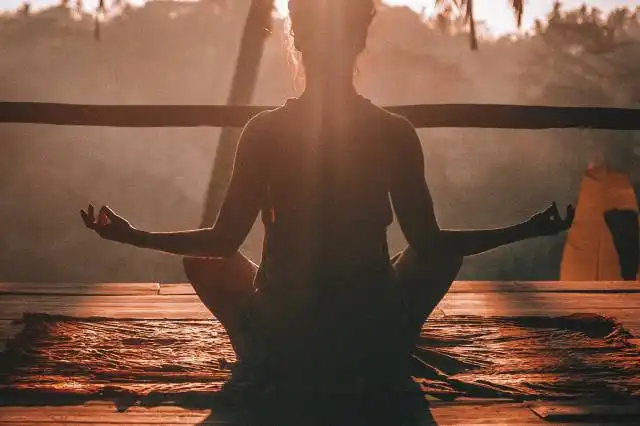Start a Grocery Delivery Business
Riding on the Technological Sleigh: The Future of the Grocery Delivery Business
| Updated


GROCERY DELIVERY BUSINESS
Behold, the grocery delivery business - a realm where the jingle of carts and the rustle of brown paper bags come straight to your doorstep! This innovative business model caters to the culinary, snack-time, and last-minute baking needs of busy consumers, allowing them an extra layer of convenience. As a new entrepreneur, imagine yourself helming a technological sleigh, loaded not with gifts, but with a dazzling array of fresh fruits, vegetables, dairy, and more. This business mainly relies on receiving online orders and delivering grocery items right to a customer's doorstep; it's like running an express supermarket on wheels!
Jump to Business Plan
RELATED BUSINESS IDEAS
Browse ALL Rental & Delivery Services Business Ideas
Discover Your Perfect Domain
Unlock the door to your online success with our hand-picked selection of premium domain names. Whether you're starting a new venture or rebranding an existing one, the right domain can set the tone for your digital presence. Browse through our curated list, each with its unique potential to enhance your brand's visibility and credibility.
GROCERY DELIVERY MINI BUSINESS PLAN
This a quick reality check to help you identify the strengths and weaknesses of your business concept before you dive in.
Expected Percent Margin:
- Gross Margin: 20-30%
- Net Profit Margin: 5-10%
Earnings Expectations:
- Daily Earnings: $500 - $1,000
- Weekly Earnings: $3,500 - $7,000
- Monthly Earnings: $15,000 - $30,000
- Annual Earnings: $180,000 - $360,000
Actions to Hit Those Numbers:
Building a Network and Inventory:
- Partner Stores: Build partnerships with local grocery stores and wholesalers.
- Fresh Foods: Ensure access to daily fresh fruits, vegetables, dairy, and meats.
Online Presence and Marketing:
- Website/App: Develop a user-friendly website or app for customers to place orders.
- Social Media & Advertising: Regular posts on social media platforms and allocate some budget for paid advertising.
Delivery and Operations:
- Delivery Personnel: Hire and train responsible delivery personnel. Start with 5-10 delivery people.
- Delivery Efficiency: Plan efficient delivery routes and times to maximize earnings.
Customer Service:
- Customer Support: Have a responsive customer support team to handle queries, complaints, and requests.
- Repeat Business: Encourage repeat business with a loyalty program or weekly deals.
Cost Control:
- Delivery Charges: Implement a delivery charge or minimum order amount to cover operating costs.
- Inventory Management: Proper inventory management to reduce spoilage and waste.
These estimates will differ based on location, competition, partnerships, and business strategies. It's advisable to consult with a business or financial advisor for a detailed business plan.
NOT WHAT YOU HAD IN MIND? Here are more ideas



Browse ALL Rental & Delivery Services Business Ideas
Grab Your Business Website Name
Before you get caught up in the whirlwind of setting up your business, invest in a domain name. It's a small but significant step that lays the foundation for your brand and makes it easier for customers to find and trust you. Just like you wouldn't build a house without securing the land first, don't build a business without securing your domain name.
"Why? Can't that wait?" Here's why it shouldn't
Step 1: Determine if the Business is Right for You
Before starting any business, it is important to determine if the business is right for you. When it comes to starting a grocery delivery business, there are several factors to consider. First, you need to understand the startup expenses. This includes the cost of a vehicle, insurance, and any other necessary equipment. You also need to consider the ongoing expenses, such as fuel, vehicle maintenance, and any other costs associated with running the business. Additionally, you need to understand the potential ways to make money. This includes charging a delivery fee, charging a markup on items, and any other potential revenue streams. By understanding these factors, you can determine if the business is right for you.
Breakdown of Startup Expenses
When it comes to starting a grocery delivery business, there are several startup expenses to consider. This includes the cost of a vehicle, which can range from a few thousand dollars to tens of thousands of dollars depending on the type of vehicle you choose. Additionally, you will need to consider the cost of insurance, which can vary depending on the type of vehicle and the area you are operating in. You will also need to consider the cost of any other necessary equipment, such as a cooler, delivery bags, and a smartphone. By understanding these startup expenses, you can determine if the business is right for you.
Breakdown of Ongoing Expenses
In addition to the startup expenses, you also need to consider the ongoing expenses associated with running the business. This includes the cost of fuel, which can vary depending on the type of vehicle you are using. You will also need to consider the cost of vehicle maintenance, such as oil changes and tire rotations. Additionally, you need to consider any other costs associated with running the business, such as advertising costs and any other fees. By understanding these ongoing expenses, you can determine if the business is right for you.
Examples of Ways to Make Money
When it comes to making money with a grocery delivery business, there are several potential revenue streams. This includes charging a delivery fee, which can range from a few dollars to a few dozen dollars depending on the distance and the type of items being delivered. You can also charge a markup on items, which can range from a few percent to a few dozen percent depending on the items being delivered. Additionally, you can look into any other potential revenue streams, such as offering additional services or partnering with other businesses. By understanding these potential ways to make money, you can determine if the business is right for you.
Step 2: Name the Business
Choosing a name for your grocery delivery business is an important step in the process of starting your business. It should be something that is memorable, easy to pronounce, and that conveys the message of what your business is about. Consider using words that evoke the idea of convenience, such as “speedy” or “express”. You may also want to consider using a name that is unique and stands out from other businesses in the same industry. Additionally, make sure to check that the name you choose is not already taken by another business. You can do this by checking with the U.S. Patent and Trademark Office or your local state office.
Registering the Name
Once you have chosen a name for your business, you will need to register it with the appropriate government agencies. Depending on your state, you may need to register your business name with the Secretary of State or the Department of Corporations. Additionally, you may need to register your business name with the Internal Revenue Service (IRS) and the state tax agency. This will ensure that your business is legally recognized and that you can start operating legally. Finally, you will need to register your business name with the local county clerk’s office so that you can obtain a business license.
Step 3: Create a Business Plan
A business plan is a critical component of starting a grocery delivery business. It should include a detailed description of the business, the services that will be offered, the target market, and the competitive landscape. It should also include a financial plan that outlines the startup costs, ongoing expenses, and projected revenue. Additionally, it should include a marketing plan that outlines how the business will be promoted and how it will reach its target market.
Writing the Business Plan
Writing a business plan can be a daunting task, but there are many resources available to help. The Small Business Administration (SBA) offers free templates and guidance on how to write a business plan. Additionally, there are many online resources that provide step-by-step instructions on how to create a business plan. Once the business plan is written, it should be reviewed by a professional to ensure that all the necessary components are included.
Presenting the Business Plan
Once the business plan is written, it should be presented to potential investors or lenders. This presentation should include a summary of the business plan, an overview of the competitive landscape, and a detailed financial plan. Additionally, it should include a description of the services that will be offered and how they will be marketed. Finally, it should include a timeline for when the business will be operational and when it will reach profitability.
Step 4: Obtain Licenses and Permits
In order to start a grocery delivery business, there are certain licenses and permits that must be obtained. Depending on the state, these may include a business license, a sales tax permit, a food handler’s permit, a driver’s license, and a vehicle registration. It is important to research the specific licenses and permits required in your state and to apply for them in a timely manner. Additionally, if you plan to hire employees, you will need to obtain an Employer Identification Number (EIN) from the Internal Revenue Service (IRS).
Where to Obtain Licenses and Permits
The best place to start when obtaining licenses and permits is to contact your local government office. They will be able to provide you with the necessary information and paperwork for each license and permit. Additionally, you may be able to apply for some of the licenses and permits online. Once you have obtained all the necessary licenses and permits, you will need to keep them up to date. This may require renewing them on an annual or semi-annual basis.
Cost of Licenses and Permits
The cost of licenses and permits will vary depending on the state and the type of license or permit. Generally, the cost of a business license is relatively inexpensive, while the cost of a food handler’s permit may be more expensive. Additionally, the cost of a vehicle registration may also be more expensive. It is important to research the cost of the licenses and permits before applying for them.
Benefits of Obtaining Licenses and Permits
The benefits of obtaining the necessary licenses and permits are numerous. Not only will it ensure that your business is in compliance with local laws, but it will also give your business credibility and legitimacy. Additionally, having the proper licenses and permits will make it easier to open a business bank account and to apply for business loans. Finally, having the necessary licenses and permits will help to protect your business from potential legal issues.
Step 5: Create a Website
Creating a professional website is essential for any business. It’s the first impression customers will have of your business, so it’s important to make sure it looks professional and is easy to navigate. Here are some tips for creating a professional website:
Choose a website platform that is easy to use and allows you to customize the look and feel of your website. Popular platforms include WordPress, Squarespace, and Wix.
Incorporate your brand into the design of your website. Use colors, fonts, and images that are consistent with your brand identity.
Make sure your website is mobile-friendly. Most people use their phones to access websites, so it’s important to make sure your website looks good on all devices.
Include all the necessary information about your business on your website, such as contact information, pricing, and delivery policies.
Make sure your website is secure. Use an SSL certificate to encrypt data and protect your customers’ information.
Include a blog on your website. This will help you build an audience and establish yourself as an expert in the grocery delivery industry.
Make sure your website is optimized for search engines. This will help your website appear higher in search engine results and make it easier for customers to find you.
Include customer reviews on your website. This will help build trust with potential customers and show them that you have a good reputation.
Make sure your website is easy to navigate. Include clear menus and navigation links to make it easier for customers to find what they’re looking for.
Step 6: Market Your Business
When it comes to marketing your grocery delivery business, there are a variety of strategies that you can use. Social media is a great way to reach potential customers and build relationships with them. You can create a website and use search engine optimization (SEO) to make sure your business is visible in search engine results. You can also use email marketing to reach out to customers and let them know about your services. Additionally, you can use traditional forms of advertising such as print, radio, and television.
Create a Promotion Plan
Once you have identified the marketing strategies you want to use, it is important to create a promotion plan. This plan should include a timeline of when you will launch your marketing campaigns and how much money you will spend on each campaign. Additionally, you should create a budget for each campaign and track the results of each campaign to see which ones are most effective. This will help you make adjustments to your marketing strategy as needed.
Utilize Word of Mouth
Word of mouth is one of the most powerful forms of marketing and can be incredibly effective for a grocery delivery business. Encourage your customers to spread the word about your business by offering discounts or other incentives for referrals. You can also reach out to local businesses and organizations to see if they would be willing to promote your business.
Monitor Your Progress
Finally, it is important to monitor your progress and make adjustments as needed. Track the results of your marketing campaigns and analyze the data to see which strategies are working and which ones are not. This will help you make adjustments to your marketing strategy and ensure that you are getting the most out of your efforts.
Step 7: Hire Employees
When it comes to hiring employees for a grocery delivery business, it is important to find the right people for the job. This means looking for individuals who are reliable, have good customer service skills, and are comfortable with technology. It is also important to find employees who are familiar with the local area and can provide accurate directions to customers. Additionally, it is important to find employees who are comfortable with handling money and can accurately calculate change.
Where to Find Employees
When it comes to finding employees, there are a few different options. One option is to post job openings on job boards, such as Indeed or Monster. Another option is to post job openings on social media platforms, such as Facebook or LinkedIn. Additionally, it is possible to find employees through word-of-mouth or by asking friends and family. Finally, it is possible to find employees through local job fairs or by working with a staffing agency.
Step 8: Set Up Payment Processing
When setting up payment processing for your grocery delivery business, you have a few options. You can choose to accept credit cards, debit cards, or both. You can also accept cash or checks, but these are less common. Additionally, you can set up a payment gateway, which allows customers to pay online. This is a great option for those who don’t want to carry cash or use a credit card.
Setting Up Payment Processing
Once you’ve decided which payment processing option you’d like to use, you’ll need to set it up. This process will vary depending on the option you choose. For example, if you choose to accept credit cards, you’ll need to set up a merchant account with a payment processor. This will allow you to accept credit cards and process payments. If you choose to accept cash or checks, you’ll need to set up a cash drawer or checkbook. Additionally, if you choose to use a payment gateway, you’ll need to set up an account with a payment gateway provider.
Security Measures
When setting up payment processing, it’s important to consider security measures. You’ll need to make sure that your payment processing system is secure and that customer data is protected. This is especially important if you’re accepting credit cards or processing payments online. You’ll need to make sure that your payment processor is PCI compliant and that you’re using a secure payment gateway. Additionally, you’ll need to make sure that you’re encrypting customer data and that you’re using a secure checkout process.
Fees
When setting up payment processing, you’ll also need to consider fees. Depending on the payment processor you choose, you may be charged a fee for each transaction. Additionally, you may be charged a monthly fee for using the payment processor. It’s important to research different payment processors and compare fees before making a decision. Additionally, you should make sure that you understand all of the fees associated with the payment processor you choose.
Step 9: Track Your Progress
Tracking progress is an important step in any business venture. There are many tools available to help you track your progress. Examples of tools include customer feedback surveys, financial tracking software, and analytics tools. Customer feedback surveys can help you understand what customers think of your service and how you can improve it. Financial tracking software can help you keep track of your expenses and profits. Analytics tools can help you understand how customers are using your service and how you can improve it.
Set Goals
Once you have tracked your progress, it is important to set goals for your business. Setting goals will help you stay motivated and focused on the success of your business. Goals should be specific and measurable, and should be achievable within a certain timeframe. Setting goals will also help you stay on track and measure your progress.
Celebrate Your Success
Finally, it is important to celebrate your successes. Celebrating your successes will help you stay motivated and will remind you of all the hard work you have put into your business. Celebrating successes can be as simple as taking a day off to relax or rewarding yourself with a nice dinner. Celebrating your successes will help you stay motivated and will help you keep going.
EXPLORE MORE CATEGORIES
Browse ALL Business Idea Categories
TAKE THE NEXT STEPS










